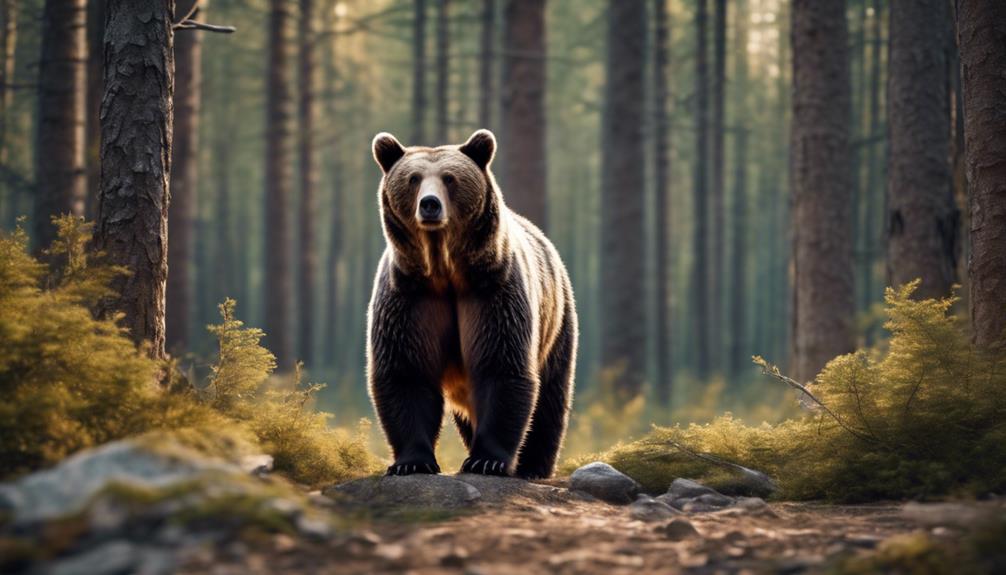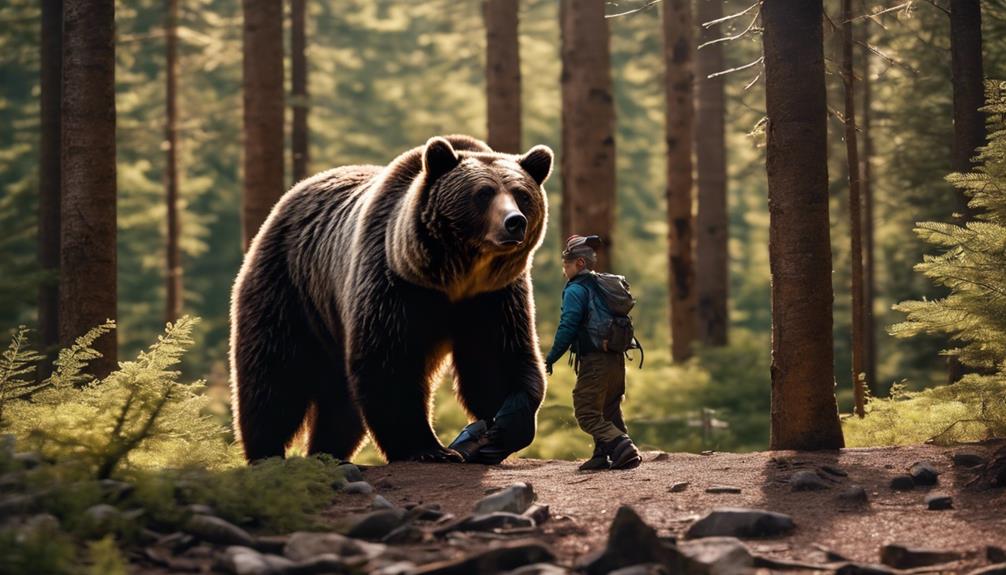Have you ever wondered how many bear attacks on humans occur each year? Surprisingly, on average, there are around 1 to 2 fatal bear attacks in North America annually.
But why do these incidents happen? Bears, like any wild animal, have specific reasons for their behavior. Understanding these reasons can be essential in avoiding dangerous encounters.
So, let's explore the three main factors that may lead to bear attacks and investigate into the precautions you can take to protect yourself in bear territory.
Bear Behavior and Aggression Factors

Bear behavior and aggression factors are important to understand in order to stay safe in bear country. When encountering bears, it's essential to recognize signs of aggression. Bears, including polar bears and grizzly bears, can pose a threat if they feel threatened or provoked. Injuries can escalate a bear's aggression, making them more dangerous.
While polar bears exhibit the most aggression towards humans, other species like Asian black bears may also show aggression due to habitat encroachment. Grizzly and American black bears, though displaying aggression, are usually not lethal unless provoked. Sloth bears, known for their unpredictable grumpy temperament, can also be aggressive.
Bears are most likely to attack when startled, especially if they feel their territory or food source is threatened. Understanding these behaviors and aggression factors can help you stay safe in bear country by knowing how to react appropriately and avoid potentially dangerous situations. Stay alert, make noise to avoid surprising bears, and respect their habitats to prevent unexpected encounters.
Understanding Bear Aggression Triggers

Understanding what triggers bear aggression is important for staying safe in their habitat. Bears can become aggressive when they feel threatened or startled. Sudden movements, loud noises, or surprising a bear, especially if it's a mother with cubs, can lead to defensive attacks.
Additionally, bears may show aggression if they feel their territory is being invaded or their food source is being threatened. It's vital to be aware of these triggers to prevent bear attacks. Being mindful of your surroundings, making noise while hiking, and avoiding sudden movements can help minimize the risk of triggering bear aggression.
Remember that bears are wild animals, and it's vital to respect their space and behavior to guarantee your safety and the well-being of the bears. By understanding what can provoke bear aggression, you can better prepare yourself for encounters in bear habitats.
Precautions and Safety Measures

What essential precautions should you take to guarantee your safety while in bear habitats?
To begin with, always make noise while hiking to avoid startling bears. This simple action can alert bears of your presence and prevent surprise encounters, which can lead to defensive behavior.
Additionally, it's important to avoid getting between bears and their food sources or offspring, as this can trigger defensive responses. Carrying bear deterrents, such as bear spray, is highly recommended in bear habitats. Being prepared with these tools can provide you with a sense of security and a means of defense if a bear approaches too closely.
Educating yourself about bear behavior and how to react in different encounters is key to staying safe. By understanding their behavior and knowing how to respond appropriately, you're better equipped to handle unexpected situations.
To end, always respect bear habitats and remain vigilant for bear signs to minimize the chances of startling or encountering bears unexpectedly.

Erzsebet Frey (Eli Frey) is an ecologist and online entrepreneur with a Master of Science in Ecology from the University of Belgrade. Originally from Serbia, she has lived in Sri Lanka since 2017. Eli has worked internationally in countries like Oman, Brazil, Germany, and Sri Lanka. In 2018, she expanded into SEO and blogging, completing courses from UC Davis and Edinburgh. Eli has founded multiple websites focused on biology, ecology, environmental science, sustainable and simple living, and outdoor activities. She enjoys creating nature and simple living videos on YouTube and participates in speleology, diving, and hiking.
🌿 Explore the Wild Side!
Discover eBooks, guides, templates and stylish wildlife-themed T-shirts, notebooks, scrunchies, bandanas, and tote bags. Perfect for nature lovers and wildlife enthusiasts!
Visit My Shop →
